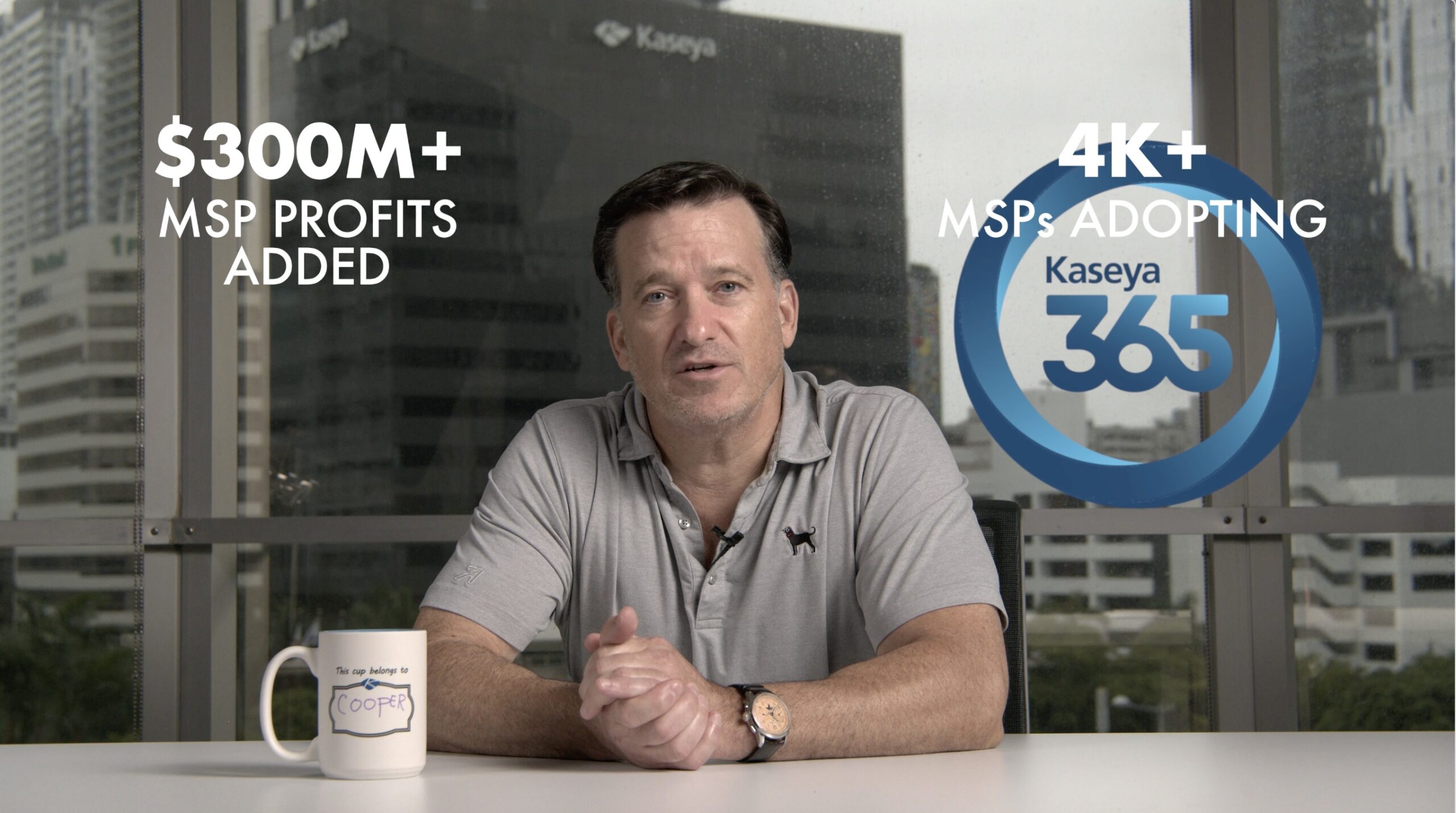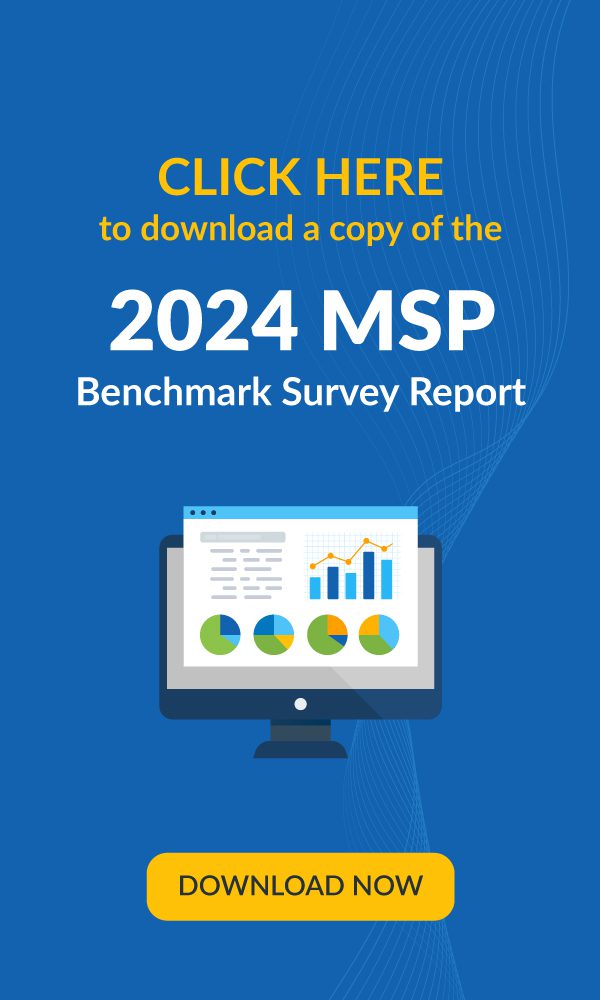By Miguel Lopez, SVP and GM for Kaseya
Not all MSPs are created equal – there is a range of scale, scope and capabilities among the thousands of providers hanging out a shingle and managing IT services. From “two guys in a garage” to multi-site operations with dozens of top-tier clients, MSPs come in all shapes and sizes, with highly varied backstories and client rosters.
Understanding where your organization fits in along that continuum can be incredibly helpful for a number of reasons. From a sales and marketing perspective, this can help you identify your competition and understand which types of engagements are realistic possibilities vs. impossible reaches or nuisance distractions, not to mention honing your product and service offering and ensuring your pricing is in the sweet spot.
But beyond pure business issues, recognizing your place within the MSP landscape is essential for prioritizing your technology needs, both for your current state and the type of MSP you’re hoping to become in the future.
To simplify things a bit, we’ve broken down MSPs into four main tiers:
- Tier 1: We Fix It
- Tier 2: Alpha Tech
- Tier 3: Premier Technology Services
- Tier 4: Mega MSP
Each tier provides valuable services to their customers and fills a real need. But – just like a Vespa, a Volkswagen and a Mack truck are all “vehicles” – each tier is only optimal for certain situations and has their own particular set of requirements.
Let’s take a deeper dive into each tier and their particular technical needs in terms of RMM and PSA solutions.
Tier 1 – We Fix It
The perception is that Tier 1 MSPs aren’t the most glamorous organizations. While this is largely true, and for the most part they do not have deep-pocketed investors lined up at their door, these smaller MSPs serve an important role in the overall ecosystem. With 10 or fewer clients, and less than 500 endpoints under their management, these companies are the type of “lifestyle” small businesses that don’t generate a lot of headlines but comprise the vast majority of entrepreneurs and business owners. Note, however, that this is more an estimate than an exact description, and variations become more pronounced as MSPs approach the next tier.
Tier 1 MSPs are primarily in it for the paycheck for their one-to-five employees. While they may provide some ongoing and regular services on a contract basis, much of their business is reactionary break-fix in nature. This can create uncertain revenue and unpredictable cashflow, which might cause these small MSPs to forgo technology infrastructure and tool investments, leaving them to support customers using homegrown, less-efficient solution stacks.
For these MSPs to grow and truly succeed, they must devote some resources and budget to process maturity, creating efficiencies and maximizing margins. This sets the stage for taking on larger clients with more stringent service level requirements.
Tier 2 – The Alpha Tech MSP
These five-to-20-person companies are usually led by a lone founder and generate between $1.5 and $5 million per year in revenue thanks to the 500 to 2,500 endpoints they have under management. Large enough to have specific internal roles (vs. purely generalists), they also have more formal business relationships and the processes to match, with regular contracts, billing procedures and account management, along with a defined process for rolling out new services.
While many Tier 2 MSPs hold steady at this level of revenue, some are able to turn on their growth engine thanks to developing particular areas of expertise or a differentiating “secret sauce” that can separate them from the pack. If their specialty of choice proves popular, it can propel them toward larger and more numerous engagements.
Tier 3 – Premier Technology Services Provider
Unlike Tier 1 and Tier 2 MSPs, these companies are true technology service providers focused on managed cloud and professional services. With $5 million to $20 million in revenue coming from a large and diverse client base, they typically have 2,500 to 20,000 endpoints under management.
Staffs consisting of 20 or more individuals divided across multiple divisions and functions are all focused on growth. Their offerings are differentiated and specialized to compete for new clients while keeping existing ones in the fold, with the goal of steadily increase monthly recurring revenue. They often bring specific expertise in security, data center management and networking – along with their managed services credibility – and often fuel growth via acquisitions and geographic expansion.
Tier 4 – The Mega MSP
The biggest MSPs are generating more than $25 million annually and staffed accordingly, with 10 employees for each million in revenue they’re making. Up to one third of their business is driven by projects vs. ongoing services, and they find themselves competing with the likes of Wipro, IBM and Cognizant for clients. Growth typically comes via acquisitions.
Shop like the MSP you want to be … in the next 12 months
There’s an old adage to dress for the job you want, not the job you have. When it comes to MSPs and their technology investments, this is also applicable — within reason.
Considering technology that meets only your immediate needs can be a bit short-sighted, like buying a two-seater convertible when you’re seven months pregnant. However, that doesn’t mean you need to run out and buy and eight-seat minivan either.
Instead, you should find the balance between buying for tomorrow (in terms of capacity and capabilities), while NOT overextending yourself and trying to anticipate what your needs will be for the next decade. There are two driving factors for this:
- Technology gets old fast so, if you don’t need it soon, just wait for the better, cheaper version that will inevitably come out before you do need it.
- Every purchase decision has the potential to lock you into a certain technology stack or path that may not fit your future self.
Using current revenues as your guide, you can narrow your purchasing priorities to get the functionality critical to making the immediate future productive and successful without overburdening your staff or outspending your budget.
For Tier 1 MSPs, the most important things to look for in a PSA-RMM solution is an intuitive and modern UI that seamlessly integrates both functions, tight integration between ticketing and remote control, and a low price point. The focus here is on professionalizing the operation and getting a system in place that breeds consistency, accountability and measurability.
For Tier 2, it’s about scalability and delivering high quality service in the face of exponential growth in endpoints under management. Dispatching calendars, forecasting tools and automation ensure customers are being promptly cared for, while revenue projections put the focus on forward-looking growth instead of backwards-facing damage control.
Tier 3 MSPs can sustain their rapid growth rates and high margins only by squeezing every bit of efficiency they can out of their operations and staff, which is why their PSA-RMM solutions must put a premium on freeing up time and streamlining communications. Proactive alerts, robust workflow support and predictive analytics add value to the technical staff and sales teams hyper-focused on growth.
As we enter the busiest shopping season of the year, think about which kind of MSP you are and what features and functionality should be on your list as you look ahead to 2019 and your business’ current and future requirements. To help identify exactly which items should be prioritized, we’ve created a PSA and RMM Buyer’s Guide to help you get just what you need and avoid what you don’t – download it today for free.
Joining Kaseya in 2012, Miguel Lopez brings over 20 years of experience to his role as SVP and GM. In this position, he consults daily with Managed Service Providers (MSPs) to help them solve their clients’ business problems with technology solutions. Prior to joining Kaseya, Miguel served as the director of consulting services for All Covered, a nationwide technology services company that is a division of Konica Minolta Business Solutions USA Inc. In 2008, All Covered acquired NetCor Technologies, a leading MSP that Miguel founded and managed since 1997.





